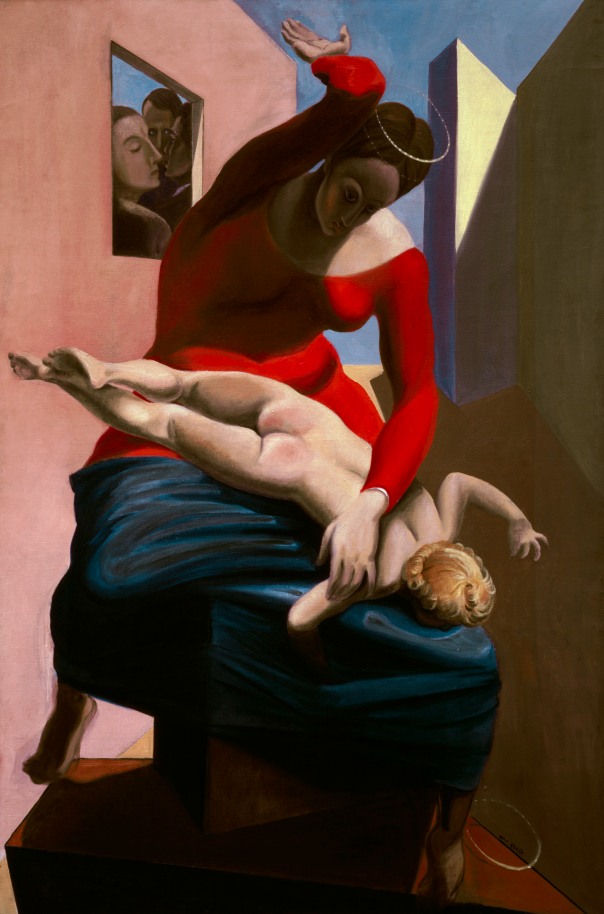by Bonnie Morris
…
“What’s wrong with you, Mr. Stillwell? Don’t you want to remember? No; you don’t. That’s why you’ve blacked it out. You’ve stubbed your conscious mind, and you’ve put a bandage of forgetfulness on it until it recovers. Have the courage to face that terrible thing that made you forget.”
— Mirage, Universal Pictures, 1965
Screen techniques, the subconscious mind, and the political messages imbedded in Hollywood film are all important tools for me as a professor of history. What the camera’s eye “uncovers” is a means for discussing how we hide historical truths, only to reveal them later in the screenplay of American culture.
At George Washington University, it’s my job to acquaint first-year college students with everything their high schools couldn’t or wouldn’t teach: scholarship on gender and sexuality. The history of slavery and segregation. The internment of Japanese Americans during World War II. The exclusion of women from schools and jobs and athletic fields. The utter suppression of lesbian and gay lives. Usually, such unflattering pictures of discrimination in not-too-distant America were skipped over in my students’ K-12 curriculum. Too often, the history of the Other is buried–marginalized. So, how do we begin to uncover it and restore it to collective consciousness? On the very first day of class, we start talking about seeing history from the margins; from the authentic perspective of the marginalized.
It’s exciting work. Unfortunately, the rich disciplines of women’s studies/black studies/gay and lesbian studies are still reserved for college courses and advanced degrees, and kept separate from “regular” American history. The subject of American women, who today make up over 51% of the population and almost 60% of college enrollment, is still a “special topic.” That’s as problematic a marker in the academic world as “special interests” are in government. It means my classes only reach self-selecting students; no one has to take women’s history. It also means that even these committed, interested students, who may have attended progressive private high schools, are stunningly unfamiliar with the ugly side of American history. My challenge, each fall, is simply convincing these sheltered and privileged students that racial segregation and No Women Allowed actually happened, and happened right here in the nation’s capital.
“No way—that’s crazy! That couldn’t possibly be true!” is a familiar outburst in my Western Civ class. Some want to know: am I exaggerating? Inventing? Indoctrinating? No. But encountering the unfamiliar in a humanities class lesson bewilders some students, who, moreover, are anxious to do well and to earn an A. Teaching “from margin to center”, to use the great book title by critic bell hooks, means teaching students to see what was never made visible in their schooling before now.
What does it mean to focus our “eyes” on the previously unseen and unspoken history too often consigned to the footnotes of a page? When I ask my American students what they know about World War II, for instance, most reach for an emblematic American memory, one that sticks out from a lifetime of rote memorization. Pearl Harbor. Iwo Jima. D-Day. We won. Part of what I’m asking is for them to shift the way history is retold, in the same way they might reassess their own “life moments” as individuals. When we sift through our personal memories, we may find they are stacked top-heavy with proud achievements and celebrations, the first kiss, the winning game, graduation. These happiest images are the ones kept in the slide-show carousel (or, updating technology a little, the personal power-point overview.) But when are we old enough to find the extra slides, the buried images that tell other stories? This is where the film screen helps my students with recovering, and thus completing, our marginalized national memories, both good and bad.
I tell my students that what helped me was a movie called Mirage. Directed by Edward Dmytryk and released by Universal Pictures in 1965, it tells the story of a man [Gregory Peck] suffering from amnesia. As he wanders through New York he becomes aware that men are out to kill him. He’s being followed, shot at, and threatened by a mysterious bad guy called “the Major,” while desperately trying to understand the meaning of it all: the past two years and his own career identity are a blur. A nervous psychologist, a brooding detective, and a cynical ex-girlfriend each give Peck small clues to his circumstances. Then, at last, one shard of memory floats up to the surface: Peck begins to see an image of himself in a Southwestern setting, clearly not Manhattan, meeting with the leader of a prominent peace foundation–a man who recently suffered a fatal fall from a top-story window. What does this memory reveal—or conceal? Did Peck play a role in this other man’s death? Read the rest of this entry »

